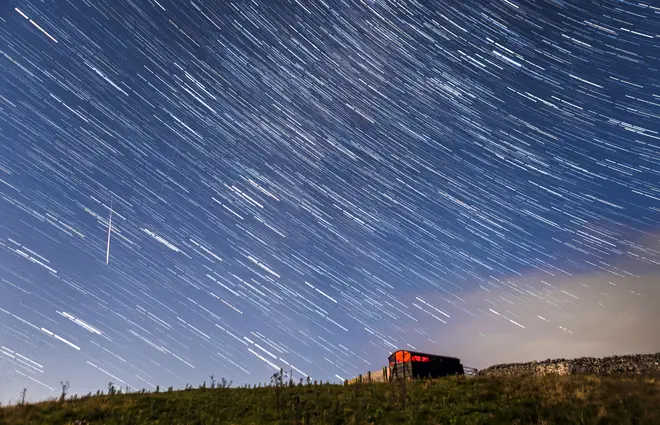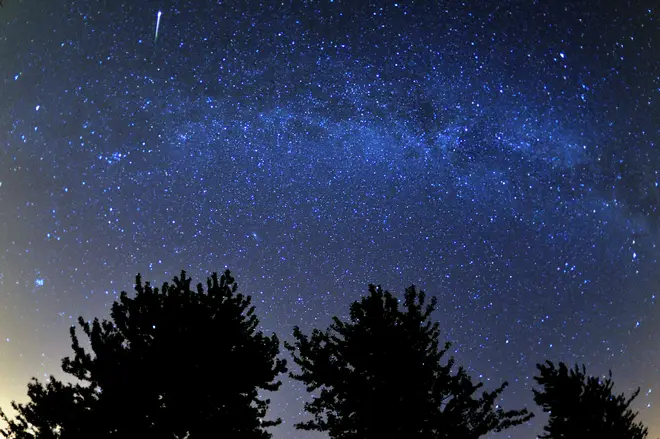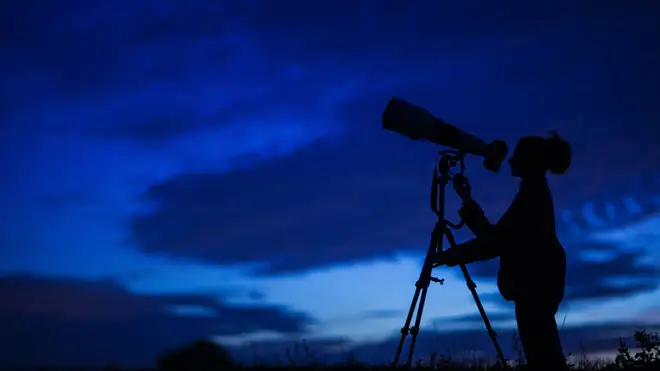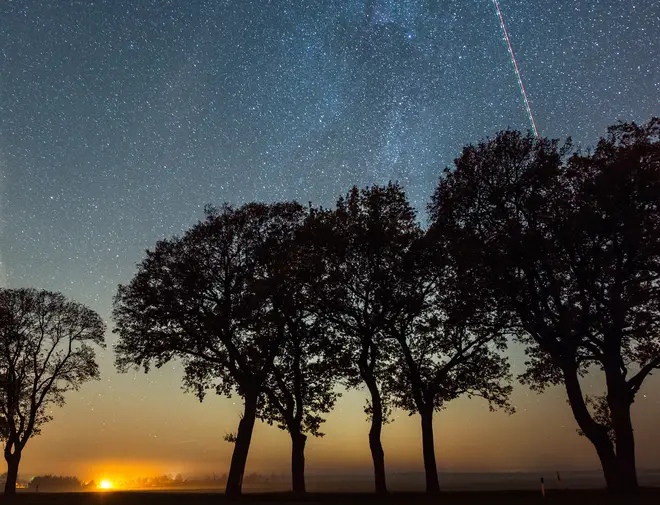
Henry Riley 4am - 7am
8 October 2019, 16:20

The Draconid meteor shower may light up UK skies with dazzling displays of shooting stars tonight and tomorrow night.
Amateur and professional stargazers across the country should be able to witness one of the potential highlights of the celestial calendar over the next two days with just their bare eyes.
So long as the weather holds up, the skies remain clear and you are away from areas of light pollution, you will be able to see the celestial spectacle in all its glory.
In the past there have been as many as 1,000 shootings stars an hour during the Draconids, however Robert Massey of the Royal Astronomical Society told Global's Newsroom the unpredictability of this annual event means "expectations" should not be raised "too much".
The International Meteor Organisation originally said "nothing exceptional was expected" this year, however new models suggest there may be a "small outburst ... of Draconid activity on 8 October".

Some of the most dramatic Draconid shows were seen in 1933 and 1946, however since 2010 there have been a number of notable performances.
And below you can find answers to all the questions you may have for the 2019 event.
The Draconids take place every first week of October when the Earth moves into material left behind by the comet 21P/Giacobini-Zinner’s tail.
As the object orbits the sun and the Earth intercepts its trail, it produces an outburst of meteors in the planet's atmosphere that are sometimes just as small as grains of sand.
These dust particles travel at such high speeds that they glow as they break up in the sky, creating the dramatic meteor shower that is visible with the naked eye.

Wherever there is a clear sky you should be able to catch the Draconids, but that is dependent on UK weather and whether you live somewhere with significant light pollution.
Looking up at the night sky, it will depend on the position of the source of them and due to their unpredictability, that is not clear.
However, Mr Massey of the RAS told Global's Newsroom that these events are usually best observed "overhead towards the north".
Theoretically speaking, the peak time to catch the show will be "onwards into the small hours" of Wednesday morning, said Mr Massey.
However, some activity should be visible beforehand.
"They're very easy to see and you can see them with just your eyes. In fact a telescope won't necessarily help as you need a much wider field of view, which is best done with your eye," said Mr Massey.
However, he reiterated that "you need a clear sky" later in the evening "when the moon has set" in order to best witness the display.

This is a harder question to answer due to the unpredictable nature of the Draconids.
There will likely be a small enhancement of activity as the Earth goes through a richer part of cloud of the trail left behind by the comet responsible.
Mr Massey said: "On any given night we see six meteors an hour, so something above that will be what we're looking at tonight."
The Draconids happen at the same time each year, roughly during the first week of October and therefore should occur at the same time in 2020.
However, other meteor showers that take place this month are the Orionids that will peak around the 21 and 22 October with 10 to 20 meteors an hour expected.
Others to look forward to are the Geminids in December and the Quadrantids in January 2020.